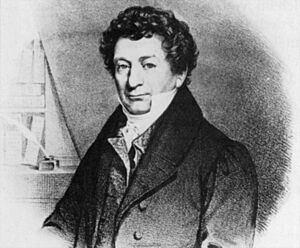Friedrich Sertürner facts for kids
Quick facts for kids
Friedrich Sertürner
|
|
|---|---|

Friedrich Wilhelm Adam Sertürner
|
|
| Born | 19 June 1783 |
| Died | 20 February 1841 (aged 57) |
| Nationality | German |
| Known for | discovering morphine |
| Scientific career | |
| Fields | Pharmacology, Alkaloid chemistry |
Friedrich Wilhelm Adam Sertürner (born June 19, 1783 – died February 20, 1841) was a German pharmacist. He was a very important person in the study of chemicals called alkaloids. He is famous for finding morphine. He got morphine from a plant called opium in 1804. He also did tests, even on himself, to see how it affected the body.
Contents
About Friedrich Sertürner
Early Life and Training
Friedrich Sertürner was born on June 19, 1783. He was the fourth of six children. His family lived in Neuhaus, which is now part of Paderborn, Germany. His father was an architect and engineer.
When his father passed away, Friedrich became a pharmacist's helper. He worked at a pharmacy in Paderborn. He finished his training in four years. Then, he passed his final exam on August 2, 1803.
Discovering Morphine
Sertürner started working to get morphine from opium in 1804. Opium is a plant that has been used for medicine for a long time. He named the chemical he found "morphium." This name came from Morpheus, the Greek god of dreams.
He wrote a detailed paper about how he found it. He explained how he made it into crystals. He also described how it affected the body. He first tested it on stray dogs. Then, he carefully tested it on himself.
Morphine was the very first alkaloid ever found from any plant. This made Sertürner the first person to find the main active part of a medicinal plant. The science he started is now called alkaloid chemistry.
Later Life and Work
In 1806, Sertürner moved to Einbeck. He worked there as a pharmacist's assistant. In 1809, he opened his own pharmacy in Einbeck.
He kept studying the effects of morphine. In 1817, he published another paper about morphine. After this, more people learned about his work. Morphine then started to be used more widely.
In 1821, he married Eleonore Dorette von Rettberg. They had six children together. In 1822, Sertürner bought the main pharmacy in Hamelin. He worked there until he passed away on February 20, 1841.
Around 1831, he helped study a sickness called cholera in Hamelin. He figured out that tiny living things caused the disease. He was buried in Einbeck. His son, Victor, became a pharmacist after him.
How He Was Recognized
In 1817, Sertürner received a special award. He got an honorary doctorate from Jena University. This award was suggested by the famous writer Goethe.
A French scientist named Gay Lussac helped share Sertürner's work in France. In 1831, Sertürner received the Montyon Prize. This award came from the Institut de France. It gave him the title "Benefactor of Humanity." In 1924, a street in Münster was named after him. It is called Sertürnerstraße.

